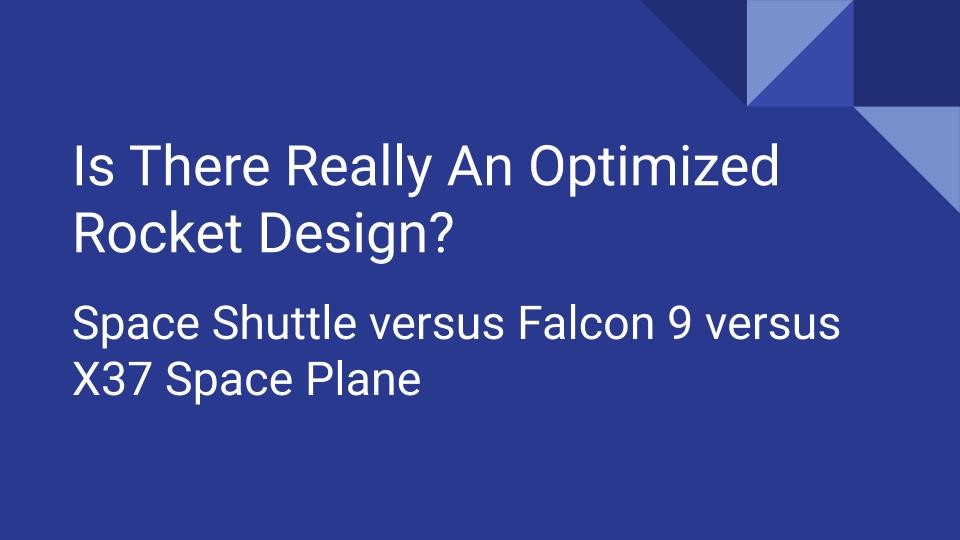
There is always room for change and growth. Sometimes we feel like we’ve reached the limits of our potential, and yet there’s always room for change and growth. Within the space field, innovation is one of those tools that is enabling the progression of the field. While this article is by no means exhaustive, the aim is to delve into Rocket Vessel design and see how the field has changed in the past two decades of rocket technology. In the modern era of Space Technology there is a transition from large space faring vessels like the Space Shuttle, to sleeker vehicles like the Falcon 9. Evolving from Falcon 9 is the intention to actually transition to allowing civilians to travel on space craft and partake in defense missions. The X37 Space Plane is designed to be one of the vehicles that will enable this to be so.
The Space Shuttle: The Workhorse
At first glance, if you think that the Space Shuttle looks like a plane, you are indeed correct. The core operations of the unit, are like a rocket with its built in RS-25 engines, and the Shuttle is actually designed to glide its way back to Earth after returning to the Earth from its extra global missions. Gliding back into the Earth without much engine power, the Shuttle is one of the gloritied workhorses of the Space Age. Designed to shuttle high weight payloads, the shuttle served its purpose during its 30 year operational run. As a reusable spacecraft, it carried both people, satellites and heavy cargo to the International Space Station. In order to function, the Space Shuttle had to be boosted to lower Earth orbit, and it would then glide its way back into the Earth. With two solid rocket boosters to start it off on its journey, the Space Shuttle starts off with a vertical launch sequence and then makes its way via its own engines to the final destinations.
A vehicle such as the Space Shuttle, while beneficial to the building of the International Space Station, does have its inherent challenges. Retired in 2009, the space shuttle now gives room to the evolution of newer vehicles that are able to now take on the tasks of carrying operational crew to the space station. How do these vehicles differ? Let’s look at the current Commercial Crew Carrier – the Falcon 9.
Falcon 9: The Falcon 9 is a modern workhorse. As a partially reusable two stage rocket, it is built in the sleek design that is much like the Saturn V, except that it is much smaller. As one vertical unit, the Falcon 9 has all components aligned in sequence. Much like the Shuttle, the booster of the rocket is the main engine, which actually returns to Earth within five minutes of launch. The design of the Falcon 9 is such that the main engines have built in thrust vector control mechanisms which enable the rocket to be landed vertically either on a landing pad at Cape Canaveral, or on a recovery drone ship.
Once the main engines are jettisoned post launch, the second stage engines actually take part in the second stage of the relay and finally deliver the Dragon Capsule to its own launch position.
The Dragon Capsule is the final stage of the Falcon, that then flies to and docks at the International Space Station. It has its own capabilities to return to Earth. As a smaller unit than the Shuttle, it is gravity pulled back to Earth once it has completed its maneuvers to return to the Earth’s atmosphere. As a smaller vessel, the Dragon Capsule can comfortably carry four astronauts, while the Space Shuttle often carried up to seven people on board.
Without the need to build any major components to the Space Station, the commercial projects can begin. For these missions, the payloads are lighter and the vessels will also be adjusted to suit that scale.
The Boeing X-37: As we scale down in terms of our rocket sizing, the next wave of space rockets is going to include vehicles such as the Boeing X-37 space plane. As a work in progress, the space plane is a reusable robotic spacecraft. Much like the Space Shuttle, the X-37 is boosted to space via a launch vehicle, and then is able to land on Earth like the Shuttle. The difference between the two is magnitude. The X-37 is much smaller than the Space Shuttle, but the underlying physics is comparable.
From these three vehicles, we can actually identify threads of alignment and threads of differences. They each serve their own purpose, and the needs of the job will determine the needs of the project. Essentially, with the advances in the space missions, the Rocket Designs actually were ideal for their time. A workhorse like the Space Shuttle will be critical for building vessels in Space, while for passenger vehicles it will be important to have smaller vehicles like the Falcon 9, that can then carry the relevant crew to the ISS, and allow them to return to Earth relatively comfortably and affordably. In terms of the X-37, while a smaller version of the shuttle, it’s aim is for defense purposes. While they may overlap in function and design, the purpose they are involved in determines their final design. Overall with the optimizations, one can see that the general improvement in the design is found in overall aerodynamics of the machines. The smaller the vehicle, the more aerodynamic it is.
